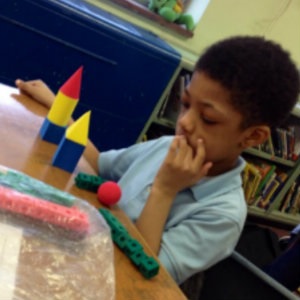 Few decisions are as important as choosing the right child care for your young ones. To make it simpler, we’re sharing key components of quality child care as stated by experts – and then a few red flags.
Few decisions are as important as choosing the right child care for your young ones. To make it simpler, we’re sharing key components of quality child care as stated by experts – and then a few red flags.
Child Care Aware®
First, we looked at Child Care Aware®, which is funded in part by the U.S. Department of Health and Human Services. Their first tip is to start early in your search so that you can find the right place for your child. Questions you can ask when visiting child care facilities include the:
- Adult to child ratio: the fewer children per adult, the more attention for your child
- Group size: again, you want to ensure that your child will get the attention he or she needs
- Caregiver qualifications: what training and/or degrees do they have? What continuing education do they receive?
- Turnover: how long have caregivers been at the center? High rates of turnover are a red flag.
National Association for the Education of Young Children
Meanwhile, the National Association for the Education of Young Children (NAEYC) shares how a developmentally-appropriate program helps children aged three to five to learn. Elements of a developmentally-appropriate program include:
- An environment where your child feels safe and secure; your child should feel liked by his or her teachers and challenged without being overwhelmed
- Ways for them to connect past experiences with current interests; a “new thread of learning stays with the child when it is part of a fabric, not an isolated strand”
- Ones with opportunities to explore and play; children need activities that will spark their interests, and then allow them to experiment and draw conclusions
Overall, in these quality programs, teachers will “consider the strengths, interests, and needs, as well as the culture and home language, of each child in the group.”
Parents.com
Parents.com offers eight tips to choose the right day care. Number two suggests that you look for signs of an organized, well-thought-out day, because children feel safe with predictable and structured days. Do you see a posted lesson plan? Bulletin boards? Artwork from the children?
Also look for signs of engagement. No child, Parents.com points out, should be wandering, uncertain of what he or she should be doing next. If you visit a center, watch how the children react to your visit. Typically, in a good center, the shyer children will drift towards the teacher – with whom he or she feels safe – while the more outgoing ones will greet you.
Care.com
Care.com shares red flags, which include signs of an unsafe environment. Do workers seem to be washing their hands frequently? If so, that’s great – and, if not, that might indicate a problem. Do you smell cigarette smoke? Are items laying around that children could trip over?
Also note communication styles and caregiver availability. Are you able to ask questions and/or share concerns with your child’s caregivers? How quickly can you schedule an appointment when needed? Does your child care center discourage you from dropping by, unannounced? If your intuition is telling you that something is off or if you struggle to get answers from your child care center, then that’s a major red flag.
Scholastic.com
Scholastic.com adds more red flags – including if the place regularly, um . . . smells. This is a telltale sign of poor hygiene or other cleanliness issues. If children seem to be crying too often – and especially if the caregivers don’t seem concerned – then that’s another warning sign. So does seeing your child involved in the same activities day after day. Although children do appreciate structure and predictability, they also need challenged – and repetition eventually turns into disinterest and boredom.
Horizon Education Centers provides affordable quality child care that includes educational and enrichment opportunities – and we’re here to answer your questions! Contact us at one of the following Northeast Ohio locations.






